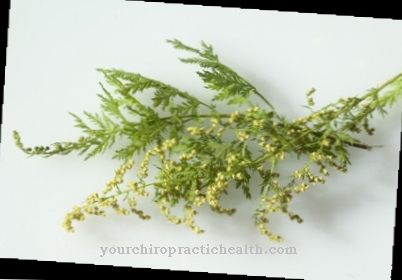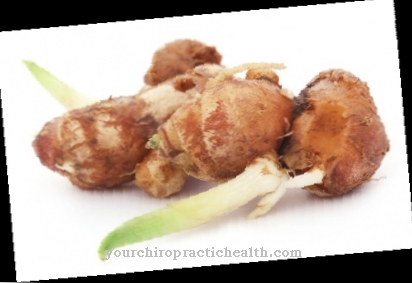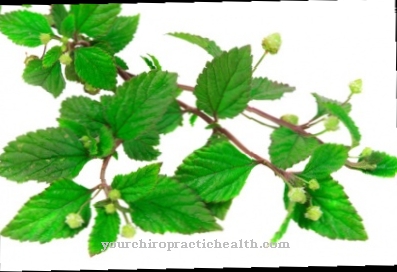Those who pay attention to conscious nutrition will Agar Agar as a vegan gelatin substitute. The white powder consisting of carbohydrates, protein and raw fibers also plays a role in naturopathy and is even used in microbiology.
Occurrence & cultivation of agar-agar
Agar Agar - also known as Agar tang, Japanese isinglass or Japanese gelatin - is a gelling substance obtained from the cell walls of certain types of red algae. The most common type of algae is Gelidium amansii lamour, a delicately branched plant up to 25 centimeters long.It thrives primarily in Southeast Asia on the coasts of the Indian Ocean, but is also found off the coasts of California and Mexico. The algae are harvested from the seabed in summer or collected on the beach at low tide, cleaned thoroughly and then left to dry. They are then boiled in water, whereby the desired ingredient dissolves from the cell walls and the cooking water turns into a thick gel.
This is dried or freeze-dried, often also bleached, and is then in the form of flakes or white powder. The name "agar-agar" comes from Indonesian or Malay and translated means something like "gelling food made from algae". In addition to Gelidium, the red algae Garcilaria, Hypnea and Pterocladia are also suitable for extracting the substance.
Effect & application
The Japanese were already producing agar agar in the 17th century and used it in the preparation of meals. Tokoroten noodles, for example, are still popular today as a low-calorie and refreshing snack. The odorless and tasteless algae powder is also traditionally used in Chinese cuisine, and even the western food industry has long since discovered its excellent properties.
Since it is much more productive than conventional gelatine, it is used as a thickener in vegetarian soups, puddings, ice creams and cakes, among other things. It can be found in the list of food additives under approval number E 406. When preparing vegetarian and vegan dishes, one level teaspoon of agar is sufficient as a substitute for six sheets of gelatine. Depending on the recipe, the powder is boiled in broth, milk, juice or water for two minutes so that its gelling effect can fully unfold.
Another area of application for agar-agar can be found in microbiology. Here the substance serves as a breeding ground for microorganisms. Their advantage over gelatine is, among other things, that it can withstand the high temperatures required for sterilization better. A thin layer of liquid forms on the surface of the agar-agar gel, on which solid objects can slide more easily.
This enables a more even distribution of test material with the help of spatulas or cannulas. In gel form, agar-agar is used in laboratories as a substrate for growing various plants and influences the physiology of their cell cultures. Recently, designers have developed a cushioning material for shipping packaging from freeze-dried agar gel under the project name “Agar Plasticity”, which is intended to replace environmentally harmful plastics.
The versatile algae powder is mainly available in health food stores, organic and Asian stores, but it can now also be found in the range of well-stocked supermarkets. Agar-agar in its pure form is offered in pharmacies and is often used as a natural swelling agent against constipation. As a homeopathic remedy in the form of globules or drops, the active ingredient is used in potencies D12, C6 to C200 and 1MK.
Importance for health, treatment & prevention
Agar-agar consists of indigestible fiber and therefore stimulates the intestines and promotes digestion. In higher doses, it can also act directly as a laxative. Classical homeopathy uses agar-agar for symptoms that occur as a result of the suppression of secretions, perspiration or skin rashes caused by externally applied preparations.
The symptoms mentioned in the corresponding drug picture range from emotional irritability and hypochondria to blood congestion, bronchitis and seizures. Also, irritating secretions, sensations of heat and burning pain in individual parts of the body are on the list - provided they are the result of the suppression of skin rash or nail fungus with ointments.
Traditional Chinese Medicine (TCM) works not only with the isolated agar-agar, but also with a tea made from the whole leaves of the red alga. It describes the active ingredients contained as detoxifying and reducing cholesterol and assigns them to the functional circuit of the stomach, liver, spleen, lungs, kidneys, bladder and intestines.
She recommends agar-agar powder mixed in water to regulate bowel movements in the case of slow bowel perestalsis, hardened stool and constipation. Similar to homeopathy, Chinese medicine also uses the valuable active ingredient from red algae to eliminate heat and reduce fire.
From bronchial catarrh and pneumonia to gastritis, cystitis and even hemorrhoids, it targets all kinds of ailments and diseases. In the Chinese tradition, agar-agar is generally considered to have a tonic effect and is recommended to stimulate the metabolism. It should help with obesity, edema and cellulite, counteract swelling of the testicles and stimulate kidney qi.
Indonesian folk medicine uses algae powder for heart disease and ascribes it to have a beneficial effect on diabetes mellitus. Because of the great similarity of the algae protein with the cartilage substances in the human body, some naturopaths also take the view in this country that an appropriate food additive can alleviate the course of osteoarthritis or - if taken regularly at an early stage - can even prevent it to a certain extent.
























.jpg)



